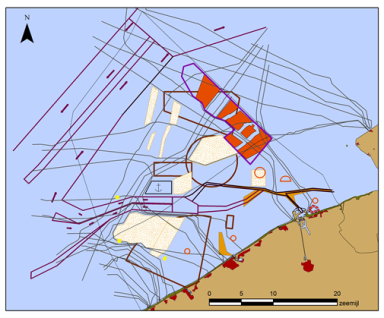Should it still be sand?
The sand and gravel exploitation in the Belgian part of the North Sea started in 1976 as an alternative to the extraction of sand and gravel on land. The sand is used for various purposes including:
• raw material in road construction
• production of concrete for the construction business
• raising and widening the beach surface as coastal defence ("beach replenishment")
Can one simply quarry sand and gravel?
In the Belgian part of the North Sea, specific zones are identified where one may quarry sand and gravel. But that is not the only condition; one must also have a concession (right of use) and possess an environmental permit. This permit is granted on the basis of an environmental impact assessment.

Zones for sand mining and dredge dumping sites
Unwanted sand
Due the presence of sandbanks off our coastal ports, there is an insufficient depth for the larger ships. Harbour channels have to be excavated and dredged as a consequence. This produces a large amount of dredged material that is dumped back into the sea in the dredge dumping sites identified for the purpose. For this too, a permit is required.
Impact on the environment
Permits are required so that the sand extraction takes place in controlled manner and the impact of the activities is kept within the bounds such as:
• the disturbance of the soil structure / sandbanks due to the removal of sand
• the increase of the turbidity
• the release of (toxic) substances
• the killing of organisms that are sucked up with the sand
• the destruction of natural coastal defence
Know more?
More info on sand and gravel extraction can be found at the website of:
• the Administrative unit of the Mathematical Model of the North Sea and the Schelde Estuary (BMM)
• the FPS Economy, SMEs, and Energy







